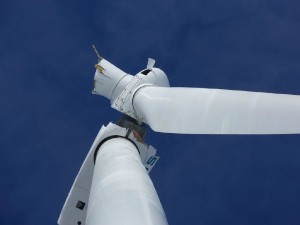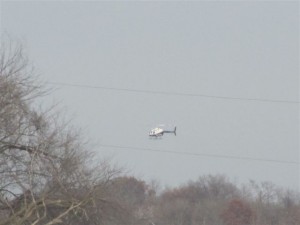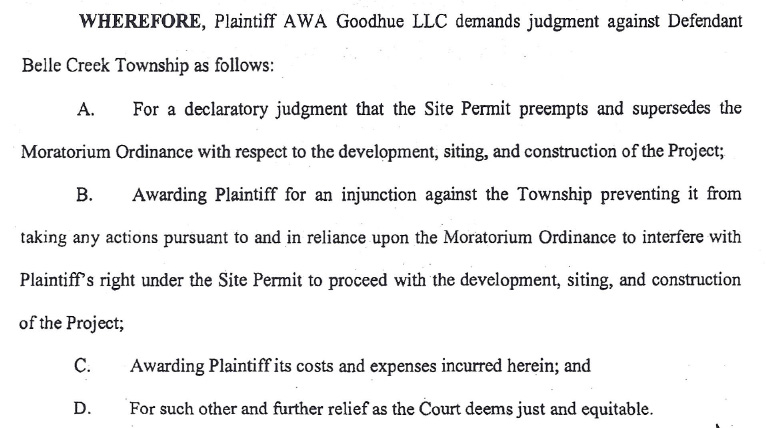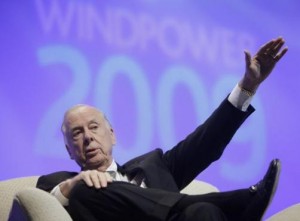PUC says NO! to AWA Goodhue Avian & Bat Protection Plan
February 23rd, 2012
.
WOW, it has been a wild week… a wild day. At 11:58 a.m. today the Minnesota Court of Appeals said that Goodhue Wind Truth could file an Amicus Brief. For nearly four years now, I’ve represented Goodhue Wind Truth in its battle for siting standards protective of neighbors of wind projects, their farms, in this case their organic dairy farm, and it seems that the many bald eagles and a few golden eagles command more attention than the many people subjected to wind turbines too close to their homes.
Double WOW, the Public Utilities Commission said that AWA Goodhue has to go back to the drawing board and redo its Avian and Bat Protection Plan.
And in the STrib:
Bald eagles win a round against wind farm
Wind turbines won’t sprout near Red Wing for at least a year, state regulators decide.
The contentious 2 1/2-hour hearing was a reflection of the emerging conflict between the demand for clean energy and a growing realization that when wind farms are in the wrong place they can kill hundreds of thousands of birds and bats a year.
The controversy over the small wind farm near Red Wing has drawn national attention from conservation groups concerned about the design and placement of wind farms.
“This is one of the hottest fights in the nation,” said Kelly Fuller, wind campaign coordinator for the American Bird Conservancy.
Goodhue Wind has recently conceded that the project would probably harm an unknown number of eagles, and has started an application for a federal permit that would legally allow it to kill the birds. The permit is a new strategy by the U.S. Fish and Wildlife Service to manage the often-lethal conflict between birds and turbine blades. Only one other wind project has applied — West Butte Power Project in Oregon — but no permits have been granted.
The decision to develop such permits is controversial among environmental and bird conservation groups. “The public cares deeply about bald eagles,” said Fuller. “I’ve never met anyone who thinks it’s a good idea to kill bald eagles. They are special birds.”
Even the utilities commissioners expressed some discomfort with the idea at Thursday’s hearing. Commissioner J. Dennis O’Brien called it “a license to kill.”
“Every fall I apply for a duck hunting license,” O’Brien said. “You will have a license to kill up to a specified number of eagles.”
Commissioner Betsy Wergin asked the company’s attorney how the number of eagle nests in their site survey could multiply so quickly since it first proposed the project.
“At the outset I recall one nest within a mile of the project,” Wergin said. “Now there are six. With the proliferation of eagles, do you think you will be allowed to get a permit?”
“We have seen more nests,” said Christy Brusven, the company’s attorney. “The eagle population is an American success story.”
But citizens who testified said that they believe the company had deliberately avoided conducting accurate surveys. They showed maps of the site footprint and the 10-mile radius around it with a dozen or more eagle nests, some of which were confirmed by state wildlife officials.
They also criticized the company’s bat monitoring survey. Brusven said the technology used to record bat calls failed about half of the time during the survey period, and as a result the count was inaccurate. She said the company would continue to monitor bats during construction.
But the commissioners said instead that they want the company to first do the survey research on bats and birds, and coordinate with the U.S. Fish and Wildlife Service on the federal permit. Then, they said, the company could re-apply in about a year.
The project faces obstacles on another front, as well. The citizens group has asked the Minnesota Court of Appeals to review an earlier decision by the PUC on setback rules. The commission overruled a Goodhue County ordinance that would have required the company to place turbines at least 2,700 feet from neighboring property lines.
Now, the appeals court will determine if the state has the right to overrule local governments on land use.
“This is a very important case,” said Daniel Schleck, the attorney representing the citizens group opposing the wind farm. “It’s an open-ended question on whether the state has the power.”
Keep wind revenue in the state!
December 30th, 2011
Wind in Minnesota is like a Suzlon turbine (above). If we’re subsidizing Minnesota wind projects, siting without regard for impacts on neighbors and community, putting them up without environmental review and giving them perks for being “locally grown,” and the profits are funneled to T. Boone Pickens in Texas who already has more than enough money, what is the point??? That’s NOT the kind of project we should be promoting.
In the STrib today, one Commentary from elected Representatives and a Senator from the area of a wind project… and one from a “wind industry trade group.”
If you click on the articles, you can go to STrib site and leave comments.
As Alan just said, it’s hard to argue with what these guys said (and believe me, there ARE things we DO argue with them about). Kudos to our elected officials, very well done:
The bounties of renewable energy need to stay at home
Article by: TIM KELLY, STEVE DRAZKOWSKI and JOHN HOWE
Updated: December 29, 2011 – 8:15 PMInstead of contributing to the community, the project is tearing it apart.
However, the private contract conceals the added costs, since it’s considered “trade secret” information.
Problems arise when out-of-state investors take advantage of the lack of transparency in existing statutes, which permit wind developers and utilities to charge higher rates for locally owned renewable energy.
This is precisely what’s happening in Goodhue County.
Although the Goodhue County project may have initially qualified as a C-BED project, it has dramatically changed since it began in 2008.
Today, it may fail to fulfill the C-BED criteria, and unfortunately, the Minnesota Public Utilities Commission has turned a blind eye.
C-BED law dictates that no single qualifying owner can own more than 15 percent of a C-BED wind energy project. The Goodhue project began small and locally owned but transformed into a large wind development plan.
Instead of the financial benefits of this renewable-energy project staying in Goodhue County, they’ll likely be sent to a billionaire with a Texas address.
We have requested a Public Utilities Commission investigative hearing into the C-BED eligibility of the Goodhue project. In addition, we encourage our House and Senate colleagues to join us in calling for an examination of C-BED statutes through a legislative hearing.
Our intentions are not to attack wind energy. We aim to ensure public trust in the renewable-energy industry. C-BED must bring value in an accountable and transparent way.
As renewable-energy projects evolve, they must be reevaluated to ensure that they still meet the requirements of a C-BED project.
We have a duty to protect our citizens from out-of-state corporations taking advantage of local resources. Doing so will ensure that the additional dollars paid by Minnesota ratepayers for C-BED energy will remain in our communities.
State and local officials must work together to guarantee that only projects that are truly community-based and community-supported move forward with a C-BED status.
* * *
Tim Kelly, R-Red Wing, and Steve Drazkowski, R-Mazeppa, are members of the Minnesota House. John Howe, R-Red Wing, is a member of the Minnesota Senate.
And then there’s one from Beth Soholt, wind industry trade group “Wind on the Wires,” spin off of the Izaak Walton League, and holder of one of the jobs created by wind:
What is wind energy worth to Minnesotans?
Article by: BETH SOHOLT
Updated: December 29, 2011 – 8:22 PMThe community benefits are evident, and the subsidies are reasonable.
An expanded tax base allows counties to invest in parks, roads and other community projects.
In Worthington, Nancy Vaske, the general manager of the AmericInn, a landowner in the Nobles Wind Project, emphasized in a statement to Wind on the Wires (an industry trade group) the benefit her community received:
“We had many [project] employees staying at our property the entire time. All the other motels were very busy as well. All of the workers used our local restaurants, and shopped at all our stores,” she said. Worthington and surrounding communities have seen a boom in recent years due to the wind industry.
As for the energy produced, Vaske continued: “The claim that none of the wind towers will benefit the local people is not true. We will all benefit because this is helping all of us not depend on other counties for our energy needs. When I see my tower turning I think not of personal gain but of the energy we are not depending on someone else for.”
Minnesota has been a leader in wind energy development since the early 1990s.
This leadership has yielded a commitment from wind developers, manufacturers and construction companies to locate and expand their businesses in and around the state. Mortenson Construction, a Minnesota-based company, is a national leader in wind farm construction.
At a time when the state is doing all it can to attract good-paying jobs, would you have these companies take their business elsewhere?
On the matter of subsidies, readers should know that the results-based Production Tax Credit is only a fraction of the subsidy that other forms of energy production have been receiving for decades.
Businesses need a certain level of certainty in order to grow and hire. The federal government has provided such certainty to oil and gas companies for decades with permanent subsidies through the tax code. We’d like to level the playing field.
A recent study, “What Would Jefferson Do?” by DBL Investors, states that the current incentives for renewable energy “do not constitute an over-subsidized outlier when compared to the historical norm for emerging sources of energy. For example … the federal commitment to [oil and gas] was five times greater than the federal commitment to renewables during the first 15 years of each [incentive’s] life, and it was more than 10 times greater for nuclear.”
Over the last decade, the wind industry has added thousands of jobs. With an extension of the tax credit, it is poised to create or save 54,000 jobs in the next four years.
Furthermore, a new study by Navigant Consulting finds that if Congress allows the tax credit to expire, major job losses will be immediate.
This not only threatens nearly 100,000 jobs the wind industry will otherwise have in the near term, but also the 500,000 jobs the Bush administration found would result if wind produced 20 percent of America’s electricity by 2030, which the industry is on track to achieve.
The Navigant study also concludes that the tax credit extension would cost about $13.6 billion but would result in approximately $25.6 billion in investment and tax revenue.
The bottom line is that wind energy in Minnesota is sound business and smart policy. It’s good for consumers.
* * *
AWA Goodhue “swiftboating” Belle Creek Township!
December 16th, 2011
.
T. Boone Pickens , a/k/a AWA Goodhue Wind, a/k/a Mesa Power, is at it again, and here come the helicopters!
First, let’s take a look-see at the Complaint that AWA Goodhue served on Belle Creek Township, the little township that could, and CAN, and DOES:
Monday, the Township had a meeting where they were to discuss the road agreement that’s in negotiations right now. The Township controls township roads, and AWA’s project would require a lot of road upgrading to support the very heavy trucks and cranes, meaning that the roadbed has to be made a lot deeper, meaning that corners have to be filled in so that trucks can get around the corners, culverts could easily be damaged by the weight, and this is something within the township’s jurisdiction. And the day after the Monday meeting, AWA Goodhue serves the Town Board Chair with a Complaint! Here’s what AWA wants:
How’s that for a punch line?!?! So the Township shouldn’t have any say over the roads, the Township isn’t able to protect its interests? Right… we shall see!
And as that’s happening, I started getting calls about very low flying airplanes, startling cows and horses, and residents too! One scared a calf, which climbed over its stall and ran off — they were able to get it, and were lucky it was not injured as it climbed over. Then today, it’s helicopters, with horses running every which way, windows rattling:
AWA Goodhue’s attorney did admit they were “their” aircraft. We got the number, N144BH, which “upon information and belief” is owned by “Brainerd Helicopter Service.” AWA Goodhue’s attorney says that they’re doing avian work as specified by their (filed yesterday) Avian and Bat Protection Plan (ABPP), which states:
You tell me, does this look like 200 feet? And anyway, exactly how is this the ABPP last word on anything?
Suffice it to say, the Sheriff is on it, and they’ve called in the FAA, apparently the FAA inspector is on it too.
Thursday – PUC takes up AWA Goodhue Reconsideration
November 3rd, 2011
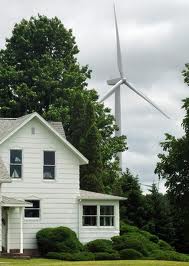 This Thursday, the Minnesota Public Utilities Commission takes up our many Motions for Reconsideration.
This Thursday, the Minnesota Public Utilities Commission takes up our many Motions for Reconsideration.
PUC Notice of November 10, 2011 Meeting
Thursday, November 10, 2011
(not to be heard before 10:00 a.m.)
Minnesota Public Utilities Commission
3rd Floor Large Hearing Room
121 – 7th Place East
St. Paul, Minnesota
Here are the ones that I filed for Goodhue Wind Truth:
Just out are the:
Appellate Court says PUC was in error!
November 1st, 2011
YES! The Appellate Court agreed with us in the AWA Goodhue (T. Boone Pickens) appeal! The appeals have been dismissed as premature, that we can/should file AFTER the Public Utilities Commission decides on the several pending Motions for Reconsideration. We have been invited to file again, with no additional filing fees. GOOD. That’s a reasonable decision and we’re not out the filing fees (I’d asked the Court for costs, out of the PUC’s hide, but this is sufficient).
Reconsideration Motions will be heard on November 10, 2011, not before 10:00 a.m. at the Public Utilities Commission, 121 – 7th Place East (3rd Floor Large Hearing Room), St. Paul, MN 55101.
This Appellate Court Order is a good outcome, the court agreeing that the PUC’s position that we had to appeal by September 22, 2011 or lose our opportunity to appeal was not grounded in law.
Here’s the choice nugget:
The general provisions of chapter 14 do not supersede more specific provisions governing appeals from the public utilities commission. In re Complaint Against N. States Power Co., 447 N.W.2d 614, 615 (Minn. App. 1989), review denied (Minn. Dec. 15, 1989). The more specific provision controls. Id.
DUH!!! SNORT!!!! And the entire Order, hot off the press:
It all stemmed from this MemoranDUMB issued by the PUC that was something I’ve never seen the likes of:
Guess they won’t be doing that again, will they!!!
